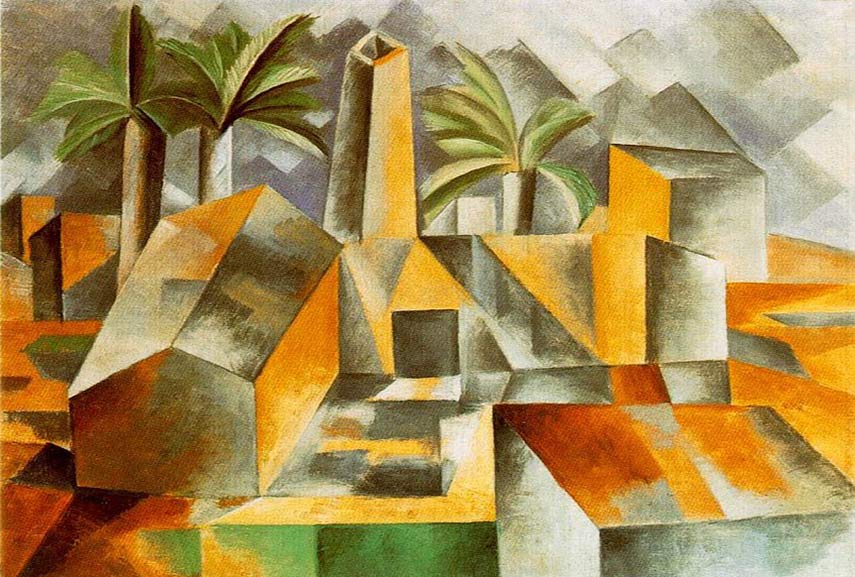
What is analytical cubism? A guide to key themes, notable artists, and important artworks.
Analytical Cubism is the first phase of the Cubist movement, primarily developed by Pablo Picasso and Georges Braque between 1908 and 1912. It is characterized by a fragmentation of objects into geometric shapes and overlapping planes, creating a complex and often ambiguous visual representation.
Artists in this style aimed to represent multiple viewpoints of a subject simultaneously, breaking down and reconstructing forms to reveal their underlying structure. They often used muted colors to emphasize the interplay of shapes and forms.
Analytical Cubism was a radical departure from traditional perspective and representation, challenging viewers to engage with the artwork on a more intellectual level.
Notable Artists
- Pablo Picasso (1881-1973) is considered one of the most influential artists of the 20th century. His work encompasses a wide range of styles, including Cubism, Surrealism, and Expressionism. Picasso's Cubist paintings,such as "Les Demoiselles d'Avignon" (1907), are considered seminal works of the movement.
- Georges Braque (1882-1963) was a close collaborator of Picasso and played a crucial role in the development of Cubism. His Cubist paintings, such as "Violin and Palette" (1909), are known for their meticulous construction and use of light and shadow.
- Juan Gris (1887-1927) was a Spanish painter who joined the Cubist movement in 1912. His work is characterized by a more geometric and analytical approach than that of Picasso and Braque. Gris' Cubist paintings, such as "The Table", are known for their clarity and precision.
Key Characteristics
- Fragmentation of objects: Cubist artists broke down objects into their component parts, such as planes, lines, and shapes. These fragments were then reassembled in a new and abstract way, creating a sense of depth and dimensionality.
- Multiple viewpoints: Analytical Cubism aimed to represent multiple perspectives of a subject simultaneously,challenging the traditional notion of a single viewpoint. This technique allowed artists to explore the object's form and structure from various angles.
- Muted colors: Cubist artists often used muted colors and earthy tones to emphasize the interplay of shapes and forms. This focus on form over color contributed to the analytical and intellectual nature of the style.
- Emphasis on structure: Cubist paintings emphasized the underlying structure of objects, revealing their geometric framework. This approach led to a deconstruction of the object and a reconstruction based on abstract principles.
- Challenge to traditional perspective: Cubist artists rejected traditional perspective, which relies on a single vanishing point. Instead, they created a fragmented and multi-dimensional space, inviting viewers to explore the artwork from different angles.
Impact and Legacy
Analytical Cubism had a profound impact on the development of modern art, challenging traditional notions of representation and paving the way for new forms of artistic expression. Its influence can be seen in subsequent art movements, including Surrealism, Abstract Expressionism, and Pop Art.
While Analytical Cubism was a relatively short-lived phase, its legacy continues to inspire artists and designers today.The Cubist approach to form, space, and perspective has been applied to a wide range of fields, including architecture,fashion, and graphic design.
Learn More: